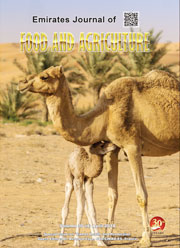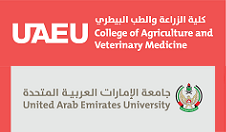MALE CAMEL BEHAVIOR AND BREEDING MANAGEMENT STRATEGIES: HOW TO HANDLE A CAMEL BULL DURING THE BREEDING SEASON?
DOI:
https://doi.org/10.9755/ejfa.v27i4.19909Keywords:
dromedary camel, handling, management, sexual behavior, welfareAbstract
The present article reviews male camel behavior and breeding management strategies, providing an insight into the handling procedures and the most relevant welfare issues on these topics. Furthermore, it suggests some procedures for rearing, handling and collecting semen from camel bulls, based on results that have been achieved in the last twenty years and, recently, literature published with the aim of optimizing dromedary camel breeding. Camels are seasonal breeders and their breeding season (BS) is confined to the coolest winter months of the year; during the BS, also called “rutting period” or "rut", males exhibit morphological, behavioral and endocrinological peculiarities. Short breeding season, low libido and high aggressiveness are still some of the major cause of economic loss, poor reproductive performance and injuries, for camel breeding and industry. The application of ethology to approach, to train and to study camel bulls may be useful in the future to improve camel welfare and productive performances. Strong knowledge of animal learning and correct management procedure could be useful for camel technicians, owners, breeders, but also for veterinarians and others scientists.
Downloads
References
Bashir and F. Branicki. 2012. Camel bite
injuries in United Arab Emirates: A 6 years
prospective study. Injury 43:1617-1620.
Al-Hazmi, M. A. 2000. Mating behavioral aspect of
one humped camel (Camelus dromedarius) in
jeddah Province; Saudi Arabia. Saudi J. Biol.
Sci. 7:113-123.
Al-Qarawi, A. A. 2005. Infertility in the dromedary
bull: a review of causes, relations and
implications. Anim. Reprod. Sci. 87:73-92.
Altmann, J. 1974. Observational study of
behaviour: sampling methods. Beha. 49:227- 265.
Babu, L. K., C. L. Pandey, N. H and A. Sahoo.
2004. Effect of individual versus group rearing
on ethological and physiological responces of
crossbred calves. Appl. Anim. Behav. Sci.
87:177-191.
Bhakat, C., S. Rghavendra and M. S. Sahani. 2005.
Effect of different management conditions on
rutting behavior of Indian dromedary camel.
Emir. J. Food Agric. 17:1-13.
Chenoweth, P. J. 1986. Libido Testing.
Theriogenology 2:136-142.
Dawkins, M. S. 2003. Behaviour as a tool in the
assessment of animal welfare. Zoology
106:383-7.
Deen, A. 2008. Testosterone profiles and their
correlation with sexual libido in male camels.
Res. Vet. Sci. 85:220-226.
Dinger, J. E. and E. E. Noiles. 1986. Effect of
controlled exercise on libido in 2 year old
stallion. J. Anim. Sci. 62:1220-1223.
Dioli, M. 2013. Pictorial guide to traditional
management, husbandry and diseases of the
one-humped camel. 2nd ed, IVIS. Camel
Pictorial Guide.
Dobson, H. and R. F. Smith. 2000. What is stress,
and how does it affect reproduction? Anim.
Repr. Sci. 60-61:743-752.
Dörges, B., J. Heucke and H. Klingel. 1992.
Behaviour and social organization of feral
camels in Central Australia. In: Proceedings of
1st International Camel Conference. R & W
Publications (Newmarket) Ltd., UK. pp. 317- 318.
Ebada, S., A. Helal and M. Alkafafy. 2012.
Immunohistochemical studies on the poll
gland of the dromedary camel during the
rutting season. Act. Histochem. 114:363-369.
El-Hassanein, E. 2003. An invention for easy
semen collection from dromedary camels, El- Hassanein camel dummy, In: L. Skidmore and
G. P. Adams (Eds.). Recent advances in
camelid reproduction. Publisher: International
Veterinary Information Service, Ithaca, New
York, USA.
El-Bahrawi K. A. 2005. Reproductive Studies on
Desert Animals: Sexual Behaviour and Semen
Characteristics and Freezability of Male
Dromedary Camels. Ph. D. Thesis, Fac. Agric.
Alex. Univ., Egypt.
El-Bahrawy, K. A., M. A. Khalifa and S. A. Rateb.
2013. Recent advances in dromedary camel
reproduction: an egyptian field experience.
The conference of “Sustainability of Camel
Populations and Production”. Publisher King
Emir. J. Food Agric. 2015. 27 (4): 338-349
http://www.ejfa.info/
348
Faisal University, El Ehsaa, Saudi Arabia p.
131.
Fatnassi, M., B. Padalino, D. Monaco, T.
Khorchani, G. M. Lacalandra, and M.
Hammadi. 2014a. Evaluation of sexual
behavior of housed male camels (Camelus
dromedarius) through female parades:
correlation with climatic parameters. Trop.
Anim. Health Prod. 46:313-321.
Fatnassi, M., B. Padalino, D. Monaco, T.
Khorchani, G. M. Lacalandra and M.
Hammadi. 2014b. Effect of different
management systems on rutting behavior and
behavioral repertoire of housed Maghrebi
male camels (Camelus dromedarius). Trop.
Anim. Health Prod. 46:861-867.
Freire, R., P. Buckley and J. J. Cooper. 2009.
Effects of different forms of exercise on post
inhibitory rebound and unwanted behaviour in
stabled horses. Equine Vet. J. 41:487-492.
Gauthier-Pilters, H. and A. I. Dagg. 1981. The
camel. The University of Chicago Press.
Haskell, M., L. J. Rennie, V. A. Bowell, F.
Wemelsfelder and A. B. Lawrence. 2003. On
farm assessment of the effect of management
and housing type on behavior and welfare in
dairy cattle. Anim. Welf. 12:553-556.
Houpt, K. A. 2011. Domestic animal behavior.
Wiley-Blackwell, Oxford, UK.
Kratzer, D. D., W. M Netherland, R. E. Pulse and J.
P. Baker. 1977. Maze learning in Quarter
horses. J. Anim. Sci. 45:896-902.
Martin, P. and P. Bateson. 1993. Measuring
behaviour. An introductory guide. 2. Ed. Cambridge University Press, UK.
McDonnel, S. 2000. Reproductive behavior of
stallions and mares: comparison of freerunning
and domestic in-hand breeding. Anim.
Reprod. Sci. 60-61:211-219.
McDonnell, S. 2003. A practical field guide for
horse behavior: the equid ethogram. The
blood-Horse Inc. Lexington, Kentucky, USA.
McGreevy, P. 2004. Equine Behavior. Saunders Ed.
N.Y.
McGreevy, P. and A. McLean. 2010. Equitation
Science: Wiley-Blackwell, Oxford, UK.
Mills, D.S. 1998. Appplying learning theory to the
management of the horse: the difference
between getting it right and getting it wrong.
Equine. Vet. J. Suppl. 27:44-48.
Morel, M. C. G. 2003. Stallion Management. In:
M.C.G.D. Morel (Eds.). pp. 249-263. Equine
Reproductive Physiology, Breeding and Stud
Management. CABI Publishing, NY.
Morgan, K. N. and C.T. Tromborg. 2007. Sources
of stress in captivity, Appl. Anim. Behav. Sci.
102:262-302.
Moberg, G. P. 1987. Influence of the adrenal axis
upon the gonads. Oxford Rev. Reprod. B.
9:456-496.
Murphy, J. and Arkins, S. 2007. Equine learning
behaviour. Behav. Process. 76:1-13.
Orr, T. E., M. F. Taylor, A. K. Bhattacharyya, D. C.
Collins and D. R. Mann. 1994. Acute
immobilization stress disrupts testicular
steroidogenesis in adult male rats by inhibiting
the activities of 17α- hydroxylase and 17,20-
lyase without affecting the binding of LH/hCG
receptors. J. Androl. 15:302-308.
Padalino, B., M. Fatnassi, D. Monaco, M.
Hammadi, T. Khorchani, and G. M.
Lacalandra. 2013. A new ethogram for
evaluating housed male dromedary camel
behavior and libido. In: proceeding of the XI
congress of Italian Society of Animal
Reproduction (SIRA), Ustica, Italy. p. 137- 142.
Padalino, B., L. Aubé, M. Fatnassi, D. Monaco, T.
Khorchani, M. Hammadi and G. M.
Lacalandra. 2014. Could Dromedary Camels
Develop Stereotypy? The first description of
stereotypical behaviour in housed male
dromedary camels and how it is affected by
different management systems. PLOS One.
9:1-7.
Pavlov, I. P. 1927. Conditioned Reflexes: oxford
University Press, Oxford, UK.
Phillips, D. M., V. Lakshmi and C. Monder. 1989.
Corticosteroid 11β-dehydrogenase in rat testis.
Endocrinology 125:209-216.
Russo, R., D. Monaco, M. Rubessa, K. A. El- Bahrawy, A. El-Sayed, N. A. Martino, B.
Beneult, F. Ciannarella, M. E. Dell'Aquila, G.
M. Lacalandra and M. Filioli Uranio. 2014.
Confocal fluorescence assessment of
bioenergy/redox status of dromedary camel
(Camelus dromedarius) oocytes before and
after in vitro maturation. Reprod. Biol.
B. Padalino et al.
349
Endocrinol. 12:16.
Sieme, H., M. H. T. Troedsson, S. Weinrich and E.
Klug. 2004. Influence of exogenous GnRh on
sexual behavior and frozen/twawed semen
viability in stallion during the non breeding
season. Therio. 61:159-171.
Skidmore, J. A. 2011. Reproductive physiology in
female Old World Camelids. Anim. Reprod.
Sci. 124:148-154.
Skidmore, J. A., K. M. Morton and M. Billah.
2013. Artificial Insemination in Dromedary
Camels, Anim. Reprod. Sci. 136:178-186.
Skinner, B. F. 1938. The Behaviour of Organisms.
Appleton-Century-Crofts, New York, USA.
Stout, T. A. E. 2005. Modulating reproductive
activity in stallions: A review. Anim. Reprod.
Sci. 89: 93-103.
Swanson, J.C. 1995. Farm animal well-being and
intensive production system. J. Anim. Sci.
73:2744-2751.
Thorndike, E. L. 1898. An experimental study of
the associate processes in animals. Psychol.
Rev. 2:1-8.
Waran N. 2007. The welfare of horses. Kluwer
Academic Press, UK.
Yagil, R. and Z. Etzion. 1980. Hormonal and
behavioral pattern in the male camel. J. Repr.
Fert. 58:61-65.










 .
. 